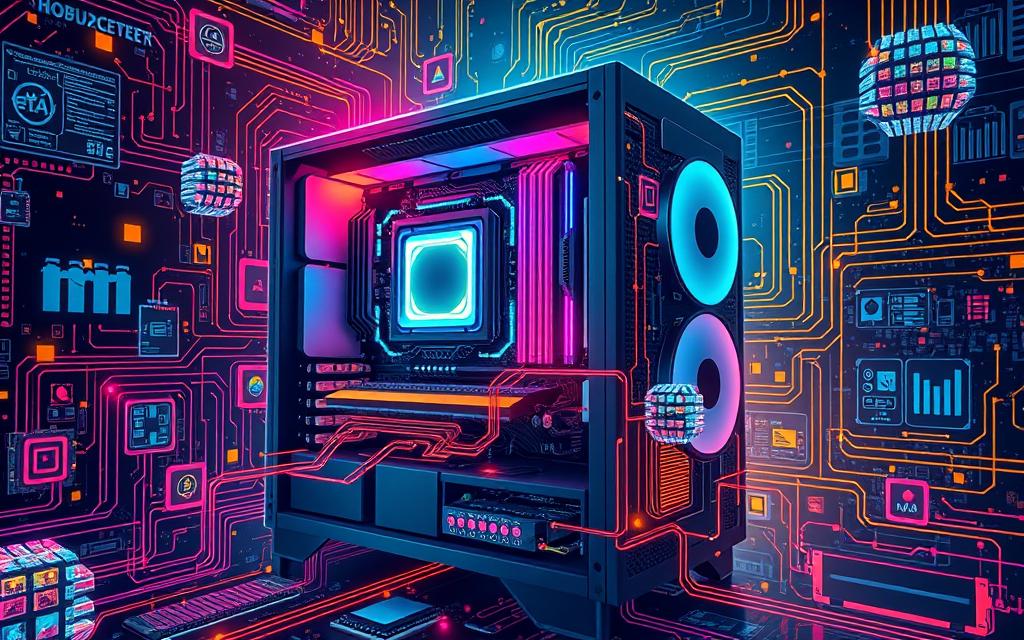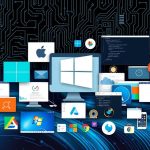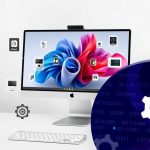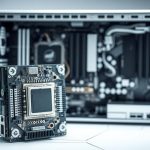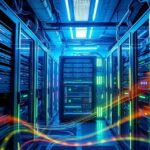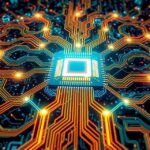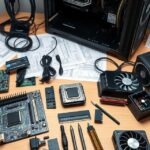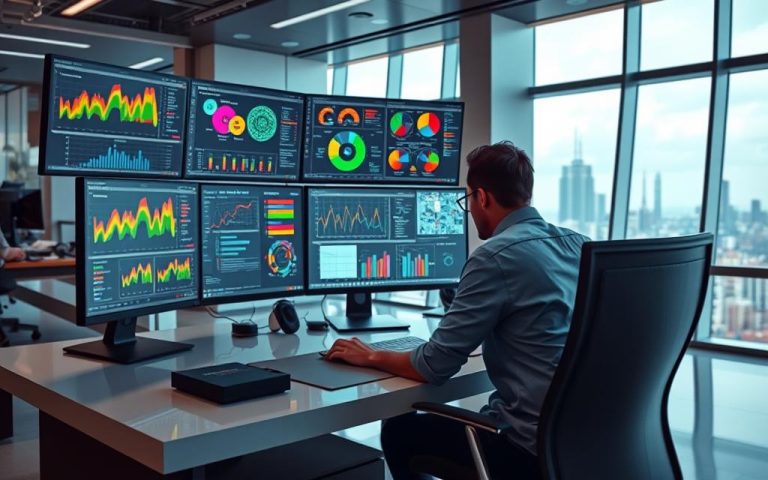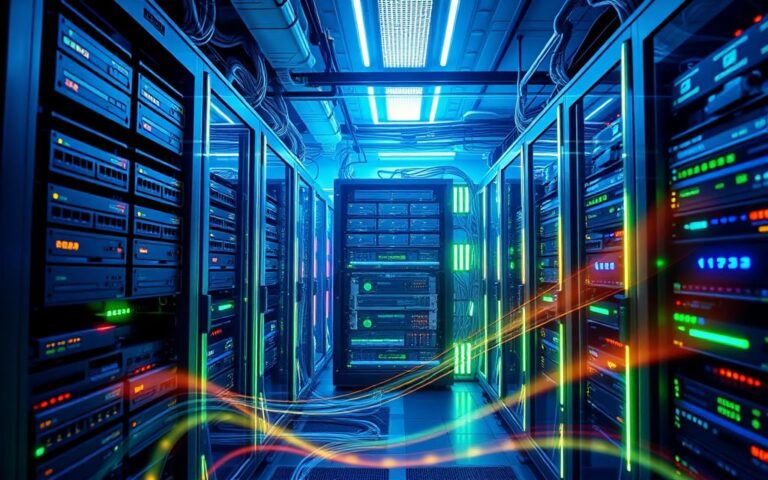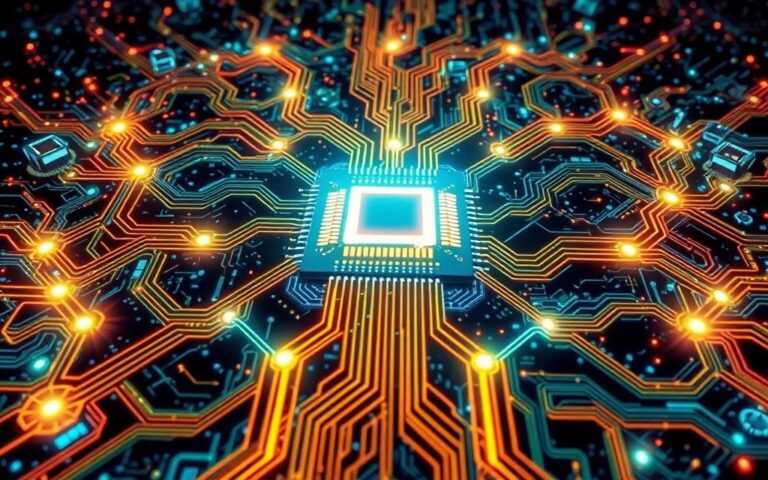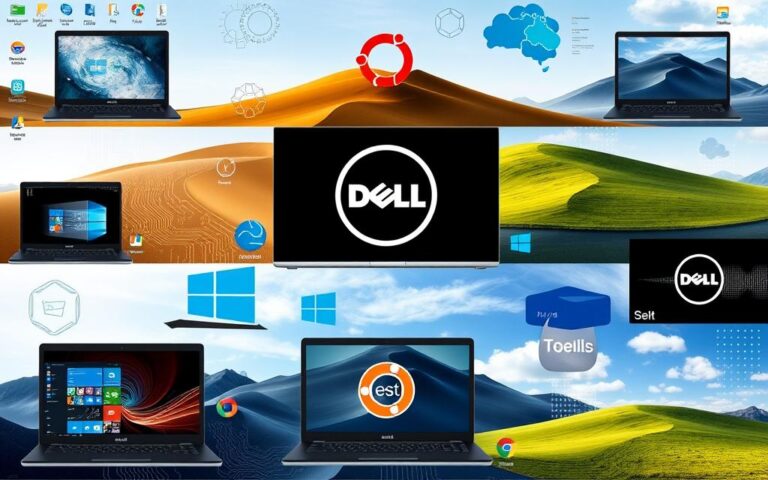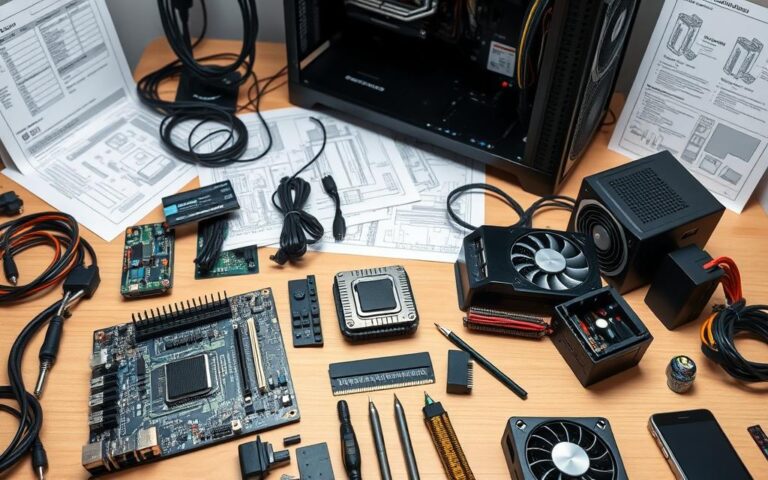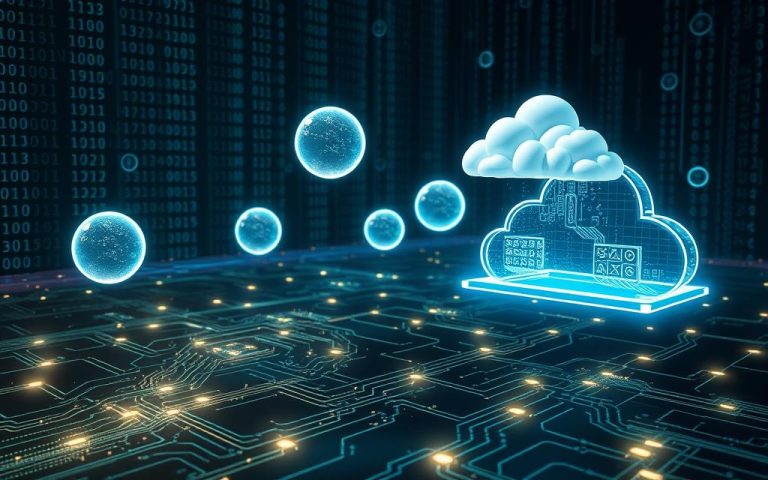What Is a Computer System? A Comprehensive Definition
A computer system definition includes both hardware and software that work together. They perform tasks such as receiving input, saving data, processing information, and producing output. This goes beyond just one device, covering all the needed resources for data processing.
A detailed computer system links devices together for efficient task completion. From microprocessors in the 1970s to today’s cloud technology, computer systems have grown. Each part is vital for today’s society, helping in business, healthcare, and education.
Understanding Computer Systems
Understanding computer systems means knowing how they are structured and operate. They work as a united system, with various parts that process data together. These systems are key in turning simple data into useful information. This shows the value of each component involved.
Definition of a Computer System
A computer system is a set of connected parts. It includes input devices, a processing unit, and output devices. These parts work together to handle data effectively. Understanding these systems is about seeing how each component helps in changing information forms.
Components of Computer Systems
Computer components are split into hardware and software. Hardware means the physical parts of the system, such as:
- Central Processing Unit (CPU)
- Memory (RAM and storage devices)
- Input and output devices (e.g., keyboards, monitors, printers)
- Peripherals (e.g., mouse, external drives)
Software includes the applications and systems that run the hardware. This includes operating systems, utility programs, and applications for user interaction.
The Role of Hardware and Software
The role of hardware and software is crucial in a computer system. Hardware forms the physical base, performing operations and storing data. Software works with the hardware, controlling its functions and enabling users to carry out tasks. This cooperation between user intentions and machine operations is vital for data processing.
Evolving History of Computer Systems
The history of computer systems shows amazing growth from early inventions to today’s high-tech machines. We’ve seen important steps in development that led to personal computers. Understanding these steps helps us see how modern computing came to be.
Milestones in Computer History
The journey of computer systems is full of groundbreaking innovations. Here are key milestones:
- 1936: Konrad Zuse made the Z1 in Berlin, the first computer that could be programmed, using vacuum tubes for processing.
- 1956: The second generation of computers came in, using transistors instead of vacuum tubes. This change made computers faster and more reliable.
- 1964-1971: The third generation of computers used integrated circuits. This made them smaller and even more efficient.
- 1972-2010: The fourth generation introduced microprocessors like Intel’s 4004. This started the personal computer revolution.
- 1991: Tim Berners-Lee introduced the World Wide Web. This began a new era in computing.
- 2010 onwards: The era of fifth generation computers began, introducing Artificial Intelligence technologies.
The Shift to Personal Computers
The move to personal computers was a game-changer in computing. The IBM PC launch in 1981 made computers cheaper and available to everyone. This step changed the way the public interacted with technology. The rise of personal computing has had a lasting effect on our digital lives today.
| Year | Milestone | Significance |
|---|---|---|
| 1936 | Z1 by Konrad Zuse | First programmable computer |
| 1956 | Transistors vs. Vacuum Tubes | Boosted speed and efficiency |
| 1964-1971 | Integrated Circuits | Smaller, faster, and more reliable computers |
| 1981 | IBM PC Launch | Initiated the personal computer era |
| 1991 | World Wide Web | Revolutionised access to information |
| 2010 onwards | Artificial Intelligence | Ongoing development in smart technologies |
A Computer System Definition
It’s crucial to grasp what an integrated computer system means. Such systems merge hardware and software to operate together. They are used in various sectors like business, healthcare, and education to boost efficiency. For businesses, they simplify checking stock levels and managing customer interactions, leading to higher productivity.
Integrated Computer System Explanation
Computer systems are more than just hardware and software. The advantage of integrated systems lies in their custom setups. These setups allow for efficient data handling, from storage to retrieval. In healthcare, this means better patient record management and secured medical images. Schools use these systems to track how students are doing and manage resources, improving education quality.
Characteristics of Computer Systems
Computer systems have key features that make them adaptable and efficient. They excel at taking in data, processing it, storing it, and then outputting useful information. They’re designed to be scalable and work with other systems, which is vital for today’s computing demands. For example, a mainframe’s capacity to handle large data sets while serving many users shows the complex design of these systems.
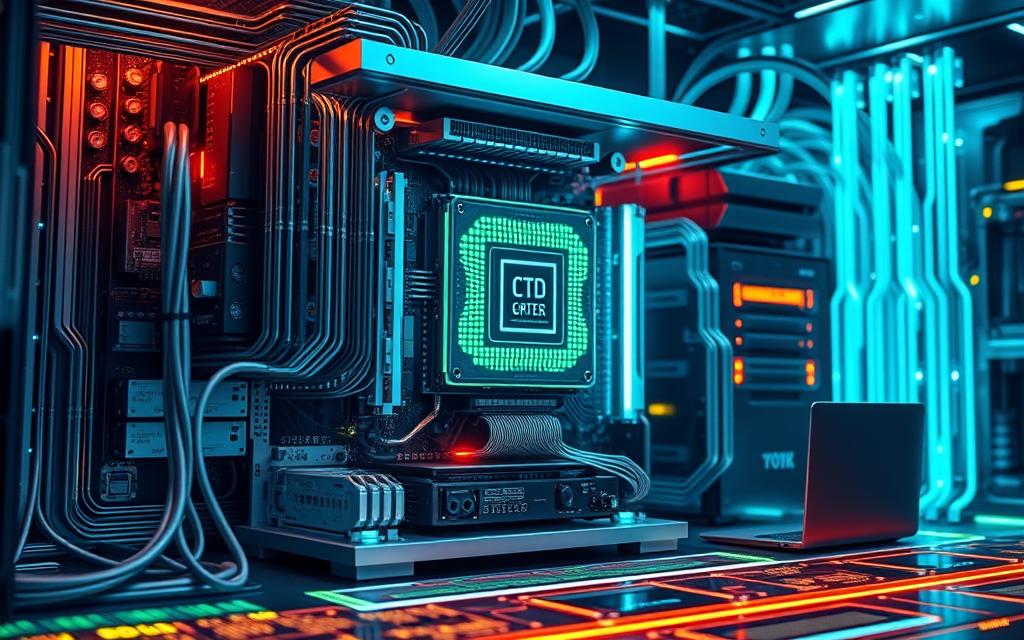
Key Components of a Computer System
If you’re keen on technology, knowing the main parts of a computer is key. Every component plays a part in making the system work well. The content that follows will go into hardware overview and software overview. It shows how both are crucial for a computer to function effectively.
Hardware Components Overview
A computer’s hardware has many important parts. The Central Processing Unit (CPU) is the core, acting as the computer’s brain. It follows instructions and processes data. The CPU is made up of parts like the Memory Unit, Control Unit, and Arithmetic and Logical Unit. They each have a role in task processing and operation management.
- Input Units: Devices like keyboards and mice let users send commands and data to the computer.
- Output Units: Items such as monitors and printers show the processed data in a form we can understand.
- Storage Devices: Systems generally use hard disk drives (HDDs) and solid-state drives (SSDs) for keeping data. These storage types have different performance and speed levels.
Modern machines, like the HP Pavilion 27-ca1006d All-in-One PC, have strong processors. The 12th Generation Intel® Core™ i7 processor handles many tasks well. Such hardware improvements allow significant upgrades. For instance, most computers now can boost their RAM, improving how they perform with demanding software.
Software Components Overview
Software is just as key as hardware for a computer’s functionality. It mainly includes system software and application software. The operating system is a type of system software. It makes sure hardware works right and helps users interact with the device. Windows and Linux are examples of operating systems.
- System Software: It looks after hardware and helps application software run.
- Application Software: This does particular tasks for users, like word processing, browsing the web, and playing games.
For a computer to perform at its best, hardware and software must work together smoothly. This team-up is vital for getting the results you want from any computer. For more about hardware’s role, check out this helpful hardware overview.
Types of Computer Systems
It’s crucial to know about the different computer systems if you’re into technology. Each type has special features and specs for various needs.
Microcomputers and Personal Computers
Microcomputers, or personal computers (PCs), are small and easy to use. They’re perfect for one person. You can find desktops, laptops, tablets, and smartphones in this group. They help with tasks like typing documents, surfing the web, and playing games. The fact that microcomputers can be more powerful than some old mainframe computers shows how far technology has come. That’s why they’re so important at home and work.
Mainframe and Supercomputers
Mainframes are powerful machines built for big organisations. They can support hundreds or thousands of users at the same time. These computers are great at processing lots of data quickly. They’re crucial in banking and telecommunication for handling complex tasks. Supercomputers, on the other hand, are for super tough computing jobs. They do things like scientific simulations and predicting the weather. With the ability to perform up to ten trillion calculations per second, supercomputers are key in cutting-edge research and investigations.
Conclusion
Grasping what makes up a computer system is vital in our tech-focused world. This overview points out the value of knowing their parts. This includes hardware and software, plus the growth that led to today’s computers.
Every part of a computer system is key for it to work well. Early giants like UNIVAC and IBM started with big computers. Then came the digital era, thanks to Alan Turing and Douglas Engelbart. Knowing how computers work is important everywhere – at home, school, and work. It lets people use tech to come up with new ideas.
To wrap up, learning about computers helps us use new tech better. The mix of different systems has improved many things. For example, it’s made weather forecasts more accurate and complex calculations possible. It keeps bringing new changes in many areas. This shows why understanding computers is key for future progress.
FAQ
What is the definition of a computer system?
A computer system is a set of parts that work together. It has input parts, a processor, and output devices. They work in harmony to process data and turn it into useful information.
What are the main components of a computer system?
Computer systems have two main parts: hardware and software. Hardware is made of physical items like the CPU and memory. Software includes the operating system and programs that control the hardware and help with tasks.
How do hardware and software interact within a computer system?
Hardware is the physical base of a computer, doing tasks and saving data. Software tells the hardware what to do. It lets users communicate with the machine effectively.
What are significant milestones in the history of computer systems?
Major moments in computer history include moving from mechanical to electromechanical systems. The introduction of transistors, integrated circuits, and the arrival of personal computers were big steps forward.
What marked the shift to personal computers?
The 1970s microprocessor boom, highlighted by the 1981 IBM PC release, started the move to personal computers. This made computers cheaper and more accessible, a change from the large mainframe systems.
Can you explain an integrated computer system?
An integrated computer system has hardware and software working together as one. This is essential for businesses, healthcare, and schools, providing efficient and smooth operation.
What are the characteristics of computer systems?
Computer systems can process, store, and share information. They can adapt to different tasks, being scalable and able to work with other systems, which helps in modern computing.
What is included in the hardware components of a computer system?
Computer hardware features key items like the CPU, RAM, and storage drives. It also includes input devices like keyboards and output devices like monitors. These components work together for a wide range of tasks.
What types of software are associated with computer systems?
Software is split into system software for running the computer and application software for task-specific uses, like document creation or internet browsing. Both kinds are crucial for a smoothly functioning and user-friendly experience.
What are microcomputers, and how do they differ from mainframe computers?
Microcomputers, like desktops and laptops, are made for personal use. They are smaller and easier to use than mainframe computers, which are powerful machines for processing huge amounts of data for large organizations.
What are supercomputers, and what are their primary functions?
Supercomputers are high-speed computers used for tasks that need a lot of calculations. They work on big projects like scientific research and weather predictions. Supercomputers are the most advanced computers available.
